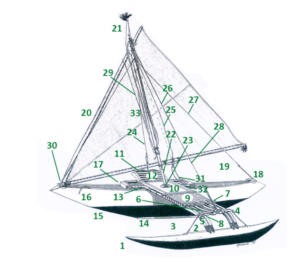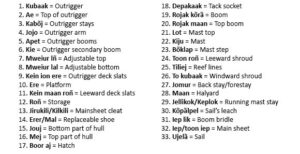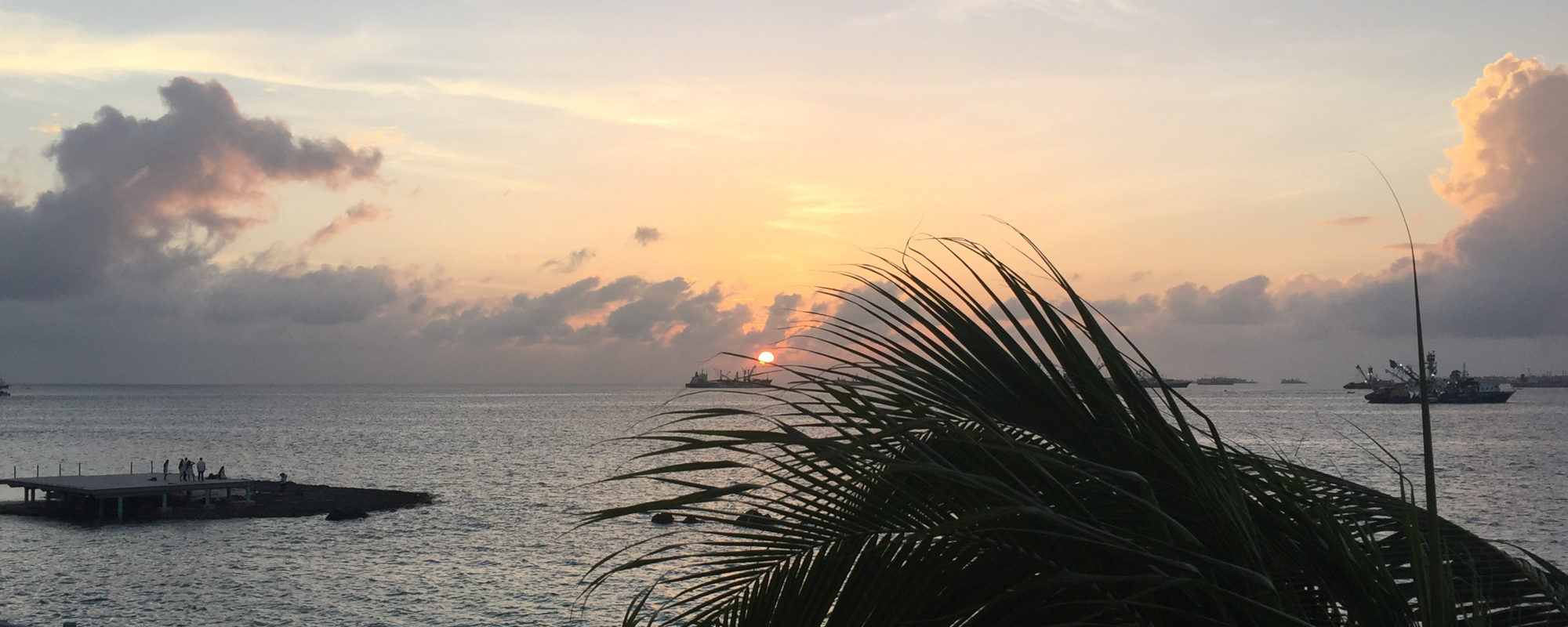For greater than 2,000 years, the outrigger canoe has been the sole means of transportation upon which the life of the Marshall Island people relied. The canoe designs have evolved for speed and utility. With their well designed canoes and navigational abilities the Marshallese have traveled as far Wake Island to the North, Hawaii to the East, Kiribati to the South and Pohnpei to the West. The Marshallese voyagers sailed in the open ocean up to 500 miles as a matter of necessity. Some exclaimed that length of voyages were limited only by supplies and spirit.
The canoe is an integral part of Marshallese culture and this is reflected in the names of it parts. The main boom is called the rojak mann (this means male boom in Marshallese) and symbolizes that the male is higher than the female. The horizontal boom is called the rojak kõrã (this means female boom in Marshallese) and this boom is critical to the function of the canoe. They symbolize that both cannot function without the other. The base of the main hull is called the jouj which means kindness. The jouj is the base of canoe that carries the weight of the canoe and is of utmost importance.
Over the years the use of the outrigger canoe has declined as motorized boats have replaced them. However, the high price of gasoline on the outer atolls has helped insure their existence. Gas on outer atolls is $6–10 / gallon. With an average income of $1 / day for many it is too costly to put gas in boats. Gas costs money, wind is free! Canoes in more urbanized areas such as Majuro are not used much for fishing or subsistence but are used more for racing and as a status symbol.


Names of Canoe Parts from Waan Aelõñ in Majel (WAM)
Wa Kuk Wa Jimor – Marshallese Canoes Today 55 minute video from Rachel Miller
